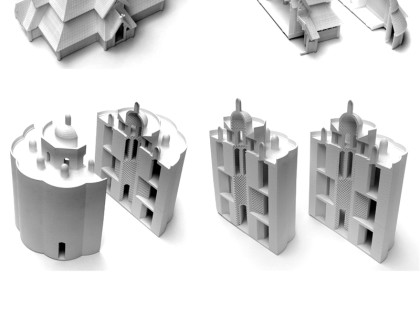by Stefano Serafini
“The survival of traditional societies over hundreds and thousands of years indicates that they surely possessed knowledge that can still be of great value either in its original form or as the basis for new developments… architects must thoroughly analyse traditional building methods and forms using scientific principles and an understanding of social and cultural requirements before discarding any of them.”
Walter Shearer, Foreword to Hassan Fathy, Natural Energy and Vernacular Architecture – Principles and Examples with Reference to Hot Arid Climates, The University of Chicago Press (Chicago), 1986, p xvi + xviii
“Architectural History from a Performance perspective – 15 Case Studies” is the title of an interesting Exhibition to be held at Galleri AHO, Oslo, Norway from 04 to 28 November 2014.
The built environment constitutes a vast repository of embedded knowledge, as well as a potential source of insights into complex interrelations and interactions that in the case of pre-industrial architectures often are inherently sustainable. Detailed analyses of the built environment are thus likely to impact rather substantially on the way we will choose to view, develop and manage the human-dominated environment today, as well as project, construct and maintain architectures and settlements for the future. To deliver a distinct trajectory to this quest is the aim of the studies presented in this exhibition, which focuses on a different take on architectural history. Emphasis is placed on questions of provisions made by carefully selected case studies based on their particular performative capacities. The exhibition includes case studies from England, Iran, Italy, Norway, Turkey, and Syria. Each case study includes computational models, computational environmental (solar, thermal, airflow) and other performance related analyses concerning resource management and operational logics, scaled models, and for selected cases also virtual reality visualizations.
The studies are undertaken by the Sustainable Environment Association (SEA), in conjunction with the Research Centre of Architecture and Tectonics (RCAT) and in parts in collaboration with the Advanced Computational Design Laboratory (ACDL) at the Oslo School of Architecture and Design.
SEA is an international and interdisciplinary expertise network that pursues systematic, integrative and interdisciplinary inquiry into the natural, human-influenced and built environment with the aim to develop alternative approaches to design and sustainability. RCAT is he primary research environment of the Institute of Architecture at the Oslo School of Architecture and Design and focuses on an extensive scope of integrative and interdisciplinary research activities in architecture that are geared towards the development of a comprehensive approach to performance-oriented architecture. The Advanced Computational Design Laboratory is an innovative research environment set within RCAT that examines emergent intersections between architecture and digital technologies, and to investigate how up-to-date digital culture impacts on architectural thinking and practice. ACDL provides the Virtual Reality Visualizations of selected case studies, and in particular of the analyzed historical settlement patterns.
The work shown in the exhibition will feature in a book published by Wiley & Sons in 2015, entitled Sustainable Traditional Building Handbook.
The event will be open by a public lecture: Architectural History from a Performance-Perspective by Prof. Dr. Michael U. Hensel on Tuesday 04 November: 12-00 – 13-00, A3 Norberg Schulz Auditorium, Oslo School of Architecture and Design, Maridalsveien 29, 0175 Oslo
Exhibition Opening: Tuesday 04 November: 13-00, Galleri AHO, Maridalsveien 29, 0175 Oslo, Norway
